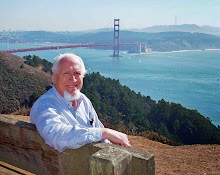Haunted People: Story of the poltergeist down the
centuries © 1951 by
Hereward Carrington (17 October 1880 – 26 December 1958)
and Nandor Fodor (13 May 1895 – 17 May 1964)
Signet Mystic Book
I like to use my IPad
to view old episodes of “One Step Beyond” from YouTube as I do my daily half
hour on my stationary bicycle. One episode from last week’s workout was Number
70 from Season 3. It was called “The Voice”
and it was about a talking raccoon that turned out to be a manifestation of a poltergeist.
It was Nandor Fodor who is credited with pointing out that poltergeists are
often centered about young/sexually inexperienced people usually girls. This voice
often happened around a young girl in the household. I recognized the story it
was based on. It was the television version
of the old “Talking Mongoose” that had been so thoroughly researched by Nandor
Fodor for his book along with Hereward Carrington: Haunted People. So I dusted off an old copy
in my library and decided to tell you about it.
After introducing
the subject of the Poltergeist Hereward Carrington lists over 300 historical
cases chronologically and provides a short description. Then he tells of some
classic cases of poltergeist activity. First, the Phelps Case in Stratford, Connecticut, that lasted about a year
and a half starting in 1850 the phenomena were mostly raping’s. Then, A Jinn in Transylvania, that obligingly
dropped coins when the medium was short on money and cigars when he needed a
smoke, then all manner of odds and ends. The research had to end in 1914 with
the beginning of WWI. And finally A
Poltergeist in Mauritius. He reports stones falling inside and outside of
homes, during 1937.
The second part
of the book is by Nandor Fodor, as well as researching and documenting cases he
brings the psychoanalyst perspective to the subject. First he discusses The Saragossa Ghost, from 1934 in Spain.
Here he identifies the young servant girl and the center of the “unconscious ventriloquism”.
He then presents a chapter on, The Psychoanalytic
Approach to the Problems of Occultism. Dr. Fodor was the first to apply psychoanalytical
techniques to the study of the occult and found the poltergeist a fertile field
for those studies. He declared, “The poltergeist is not a ghost. It is a bundle
of projected repressions. No psychoanalyst could dream of a more glorious
opportunity for the study of psychic mechanism than that offered by the bedlam
of a poltergeist-haunted home.” Next he
turns his attention to, The Case of the
Bell Witch, from the John Bell farm in Robertson County, Tennessee from
1817 to 1821. The term “poltergeist” was not yet used at the time but Dr. Fodor
uses it here to describe the events that have been written about generally as “The
Bell Witch” and were the basis for the 2008 movie by that name. He notes that “modern
poltergeist, no matter how much mischief or destruction they wreak, stop short
of murder. The Bell Witch did not, and it only ceased its activities after the
death by poisoning of John Bell, the head of the household, whom it tortured and
persecuted with a fury of unrelenting savagery.” He focuses his analysis on the
daughter Betsy Bell. And he speculates that, “Betsy Bell, as a small child, was
victimized by her own father. John Bell, as so many neurotic fathers do, had
taken with her sexual liberties, the memory of which inspired increasing horror
in both as the years progressed.” He
then spends more than 30 pages on, The Truth
about the Talking Mongoose. The mongoose not only talked but would catch
rabbits and bring back gossip from around their Isle of Man. The mongoose was
very shy and did not take to strangers or want it picture taken. Mnay things
about the behavior of Gef, that is what he liked to be called, did not match
what we expect of a poltergeist or any other psychic entity. The source of Gef’s
extraordinary abilities may never be known. Various other reports of Gef have
added skills not observed by Dr. Fodor, like multilingualism, and survival of
the death of the animal himself. Reluctantly Nandor Fodor felt obliged to
conclude that perhaps the best explanation for the events was that there once
really was a talking mongoose on the Isle of Man.
The last
section of the book is called, The
Poltergeist---psychoanalyzed. Here
Dr. Fodor shows how great an insight can be gained to the poltergeist by using
the tools of psychoanalyses.

